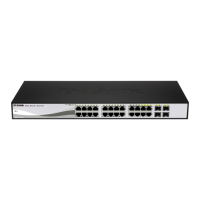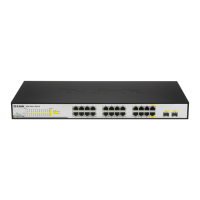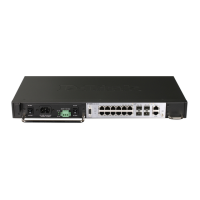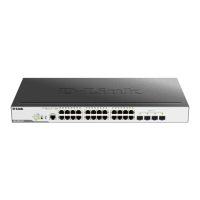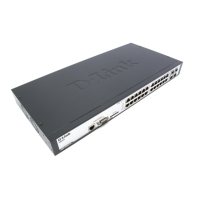Configuration D-Link Web Smart Switch User Manual
9
9
5
5
Privacy Protocol/Password: Specify either none or DES and then enter a password for SNMPv3
encryption in the right column.
Click Add to create a new SNMP user account. Click Delete to remove the corresponding entry.
SNMP > SNMP > SNMP Group
This window is used to maintain the SNMP Group Table associating to the users in SNMP User Table.
SNMPv3 can control MIB access policy, security policy for a user group directly.
Figure 4.113 – SNMP > SNMP > SNMP Group
Group Name: Specify the SNMP user group of up to 32 characters.
Read View Name: Specify a SNMP view name for users that are allowed SNMP read privileges to the
Switch's SNMP agent.
Write View Name: Specify a SNMP view name for users that are allowed SNMP write privileges to the
Switch's SNMP agent.
Security Model: Select the SNMP security model.
v1 – SNMPv1 does not support the security features.
v2c – SNMPv2c supports both centralized and distributed network management strategies. It
includes improvements in the Structure of Management Information (SMI) and adds some security
features.
v3 – SNMPv3 provides secure access to devices through a combination of authentication and
encrypting packets over the network.
Security Level: This function is only available when you select SNMPv3 security level.
NoAuthNoPriv – No authorization and no encryption for packets sent between the Switch and
SNMP manager.
AuthNoPriv – Authorization is required, but no encryption for packets sent between the Switch and
SNMP manager.
AuthPriv – Both authorization and encryption are required for packets sent between the Switch and
SNMP manger.
Notify View Name: Specify a SNMP view name for users that can receive SNMP trap messages generated
by the Switch's SNMP agent.
Click Add to create a new SNMP group name. Click Delete to remove the corresponding entry.
SNMP > SNMP > SNMP View
This window allows you to maintain SNMP views to community strings or user name that define which MIB
objects can be accessed by a remote SNMP manager.

